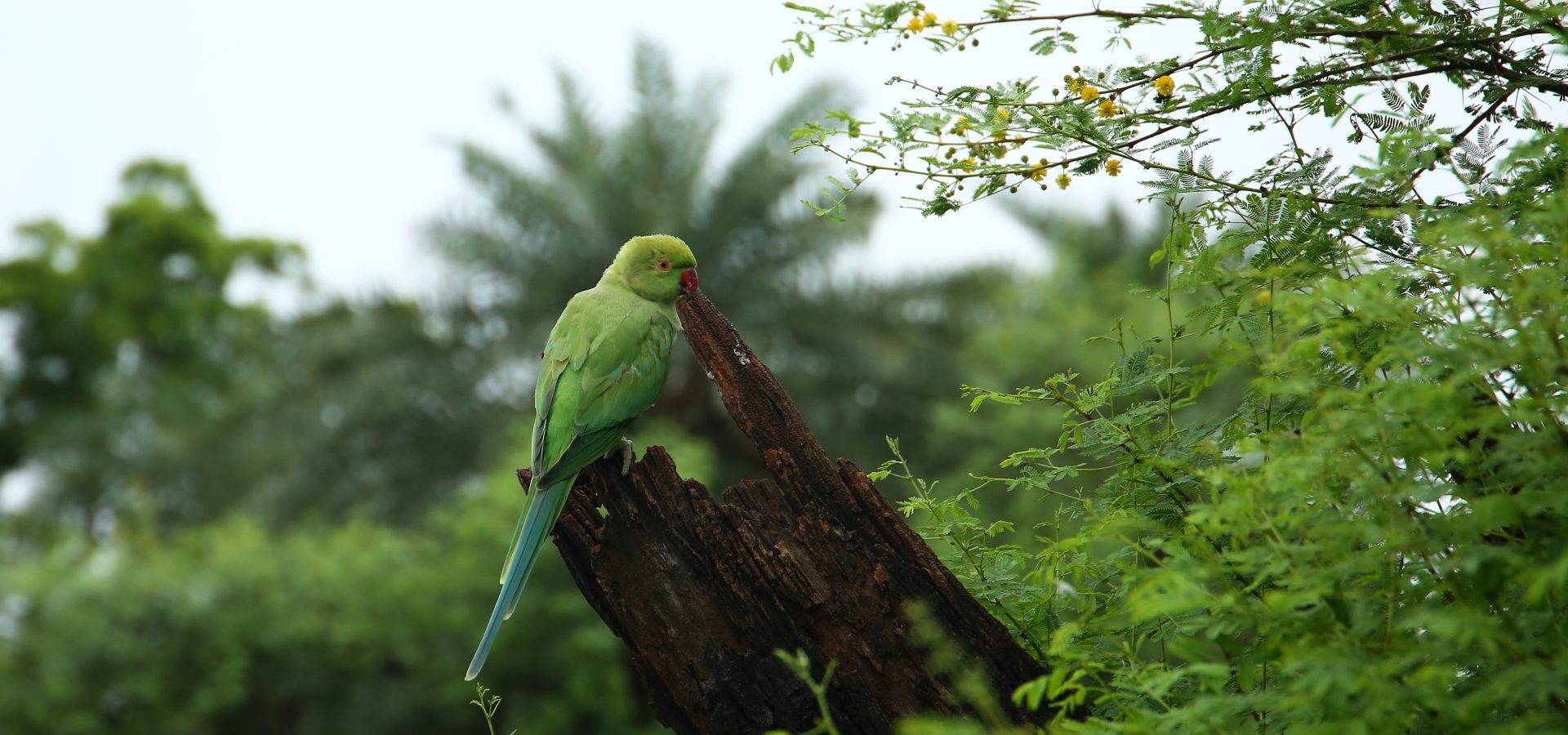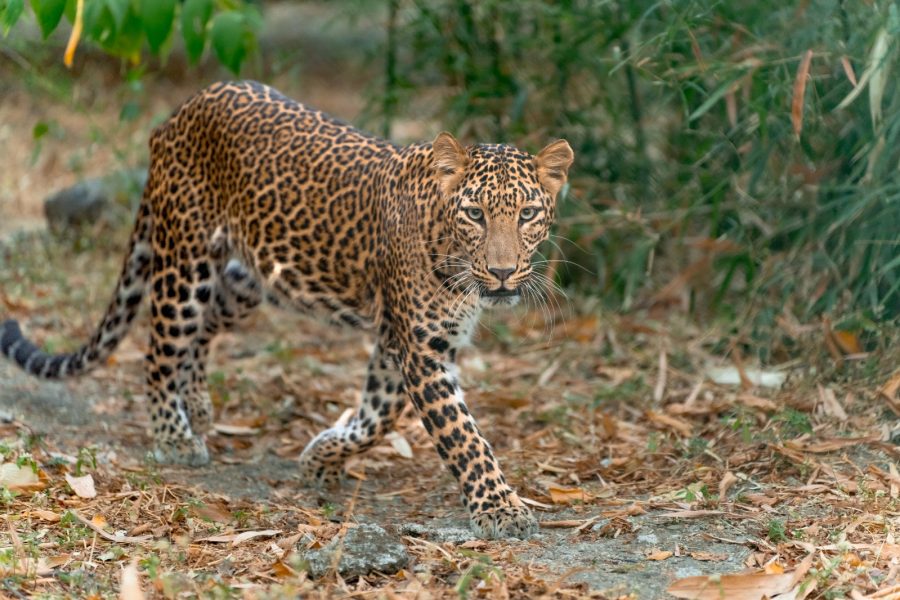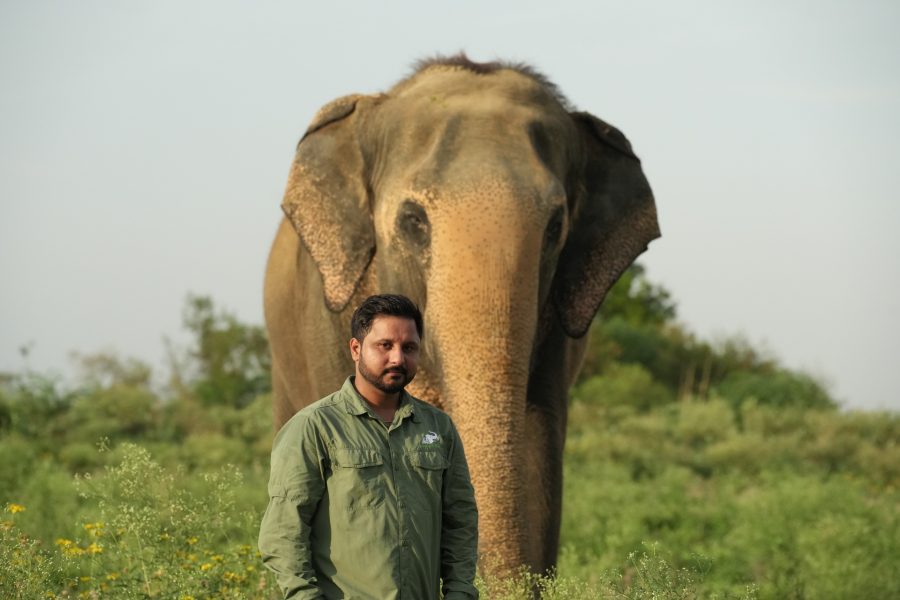Humans are drawn towards parakeets – not only are they colourful birds, they sing well too! As children, many of us held a great fascination for these birds and their unique calls. To keep them close, several even kept them as pets… not knowing that caging them as pets is illegal and severely impacts their population in the wild!
The order psittaciformes comprise parakeets and parrots, along with lovebirds, cockatoos, and macaws. They are all often collectively referred to as “parrots.” Unfortunately, in the past 500 years, we have lost 20 parrot species from the wild globally. Today, nearly 27 percent of all parrot species face the risk of extinction. Anthropogenic risks such as habitat loss, degradation, poaching, and pet trade have greatly contributed to this loss.
Recently, over 1700 birds rescued from a bird market in New Delhi were put under the care of Wildlife SOS. Parakeets along with munias, hill mynas, and buntings were seized by the Delhi Police and the Forest Department. Over 500 of these were baby chicks, which were snatched from the wild and forced into captivity. Our team members put their best foot forward and took care of these young birds, till they were old and healthy enough to be released back to the wild.
On World Parrot Day, we look at the different parakeets found in India, along with the unsettling fact that globally, parakeets’ native population is declining.
All About Parakeets!
- They have downwardly-curved beaks and long tapering tails.
- A large repertoire of sounds: From sharp metallic calls to melodious songs!
- They amply feed on fruits, flowers, seeds, buds, shoots, and nectar. Some eat insects too!
- Parakeets inhabit forests, and can be spotted in your neighborhood as well!
- They are social creature, flying in flocks of varying numbers.
- Males and females of some species have distinct physical characteristics.
- During the breeding season, the pair occupies hollow tree holes for nesting.
- Males feed the female while she incubates eggs. Both tend to the young once they hatch
- They are well-known to be vocal imitators!
Fast Facts on India’s 11!
India is home to 11 parakeet species, of which, only one is a true parrot, the Vernal hanging parrot.
- Rose-ringed parakeet (Psittacula krameri): Most widely distributed of all species, easily identified from its rose-coloured collar which is prominent in males.
- Alexandrine parakeet (Psittacula eupatria): Inhabits most parts of India, listed as Near Threatened on the IUCN Red List.
- Malabar parakeet (Psittacula columboides): Endemic to the Western Ghats, set apart from others for its blue plumage.
- Plum-headed parakeet (Psittacula cyanocephala): Named after males’ maroon-red head; females have a greyish-blue head. Can be spotted in parks, forests, and agricultural lands.
- Blossom-headed parakeet (Psittacula roseata): Similar to the plum-headed parakeet, except for paler colouration on the head. Native to Eastern India; nests in tree holes and cavities.
- Slaty-headed parakeet (Psittacula himalayana): High-altitude resident of Himalayan regions of India and neighbouring countries
- Gray-headed parakeet (Psittacula finschii): Inhabits northeastern parts of the country, listed as Near Threatened by IUCN.
- Nicobar parakeet (Psittacula caniceps): Also known as Blyth’s Parakeet, endemic to the Nicobar Islands, listed as Near Threatened by IUCN.
- Red-breasted parakeet (Psittacula alexandri): Resides in forests of northern and eastern states of India, Near Threatened on the IUCN Red List.
- Long-tailed parakeet (Psittacula longicauda): Extremely long central tail feathers displayed as it takes flight. Found in Andaman and Nicobar islands; listed as Vulnerable on the IUCN Red List.
- Vernal hanging parrot or Indian Lorikeet (Loriculus vernalis): Found in southwest peninsular forests; blue patch on the throat in males, absent in females.
A hybrid species observed solely in captivity is the Intermediate Parakeet; it has never been seen in the wild and is believed to be extinct.
Global Takeover
Parrots are among the most widespread, most traded, and now endangered in their native lands, globally. A 2019 CITES analysis report states that 90% of all live birds traded were from the order Psittaciformes.
Parakeets are biological adaptors to novel environments. The lack of natural predators ensures that they thrive and propagate their species, while also threatening the natural biodiversity. For instance, the rose-ringed parakeet has been traded to such an extent that it has successfully invaded 35 countries. The prolific species now occupies five continents, where it competes with other species, exploits food resources, spreads diseases like psittacosis, and raids crop fields.
Illegal Trade Of Parakeets
It is interesting to note that the Alexandrine Parakeet got its name from Alexander the Great, who had then famously taken several species of parakeets from India to Europe and other parts of the world. Much like then, demand for exotic animals is growing steadily now and feeds into the vicious cycle of illegal trade.
While habitat loss and degradation are the most serious threats to the birds, parakeets are gravely threatened due to illegal trade. In fact, trade in wildlife poses the second most horrifying threat to biological diversity. Parakeets face the brunt of illegal trade not just in India, but worldwide. Besides putting international security at risk, the pet trade also threatens the entire population of parakeets.
In 1990-91, a ban on bird trade in India was imposed to control the trafficking throughout the country. Parakeets are protected in Schedule IV of the Wildlife (Protection) Act, 1972. According to the law, these birds cannot be trapped, sold, or held in captivity. If anyone is reported to sell or trade them, they would be liable to a hefty fine of INR 25,000, imprisonment of up to three years, or both.
Despite such legalities, parakeets and many other birds are victims of this ugly trade. Poachers generally use nets and glue to trap these birds from the wild. Due to the high demand as pets, millions of parakeets are involved in the trade every year. According to TRAFFIC India, the Alexandrine parakeet is one of the highest illegally traded birds.
Efforts Of Wildlife SOS
Wildlife SOS rescues wild animals that are being illegally traded across the country. Alexandrine parakeets, rose-ringed parakeets, and plum-headed parakeets are amongst the most common species to be rescued. They are often found up for sale in small, suffocating cages along busy roads.
Wildlife SOS contributes significantly to curbing poaching and wildlife trafficking through its anti-poaching unit ‘Forest Watch’, which assists State Forest Departments and law enforcement agencies. Time and again, the organisation conducts capacity-building training programs to prevent wildlife crimes. By donating to our rescue efforts, you can also play a huge role in curbing these activities.





